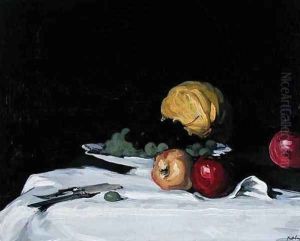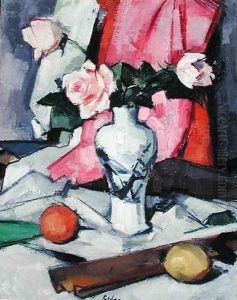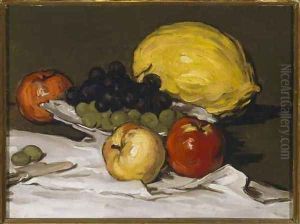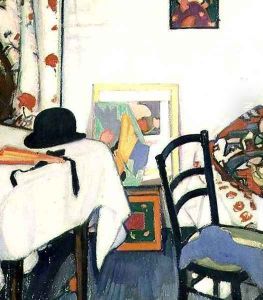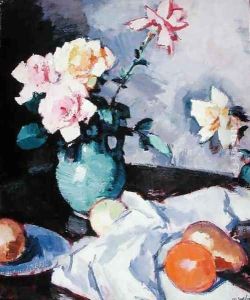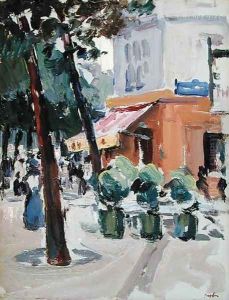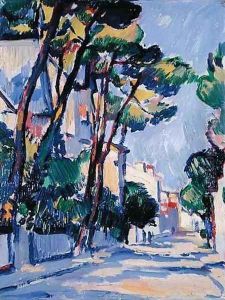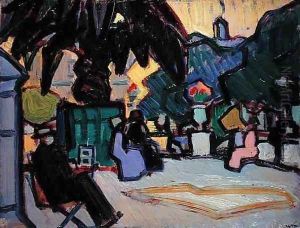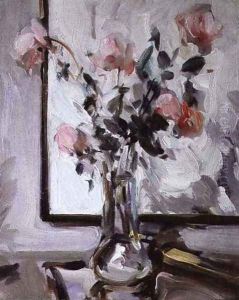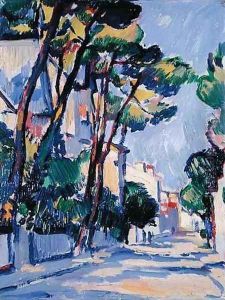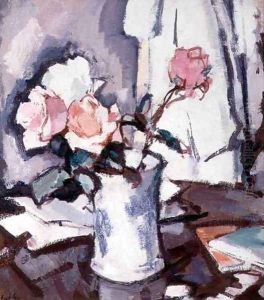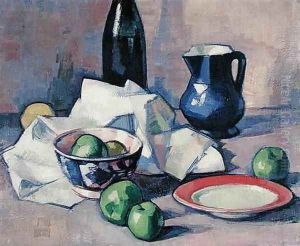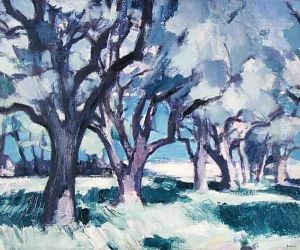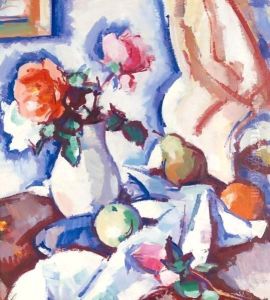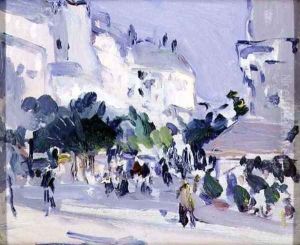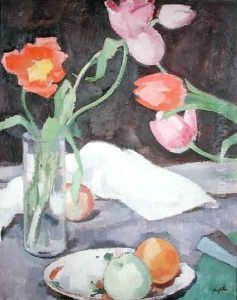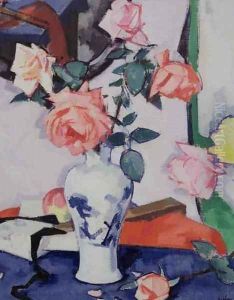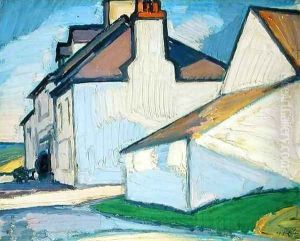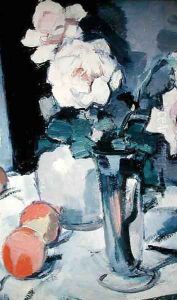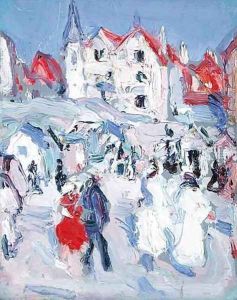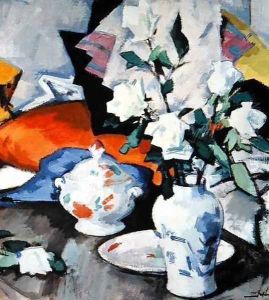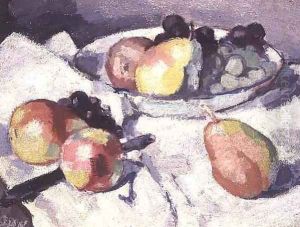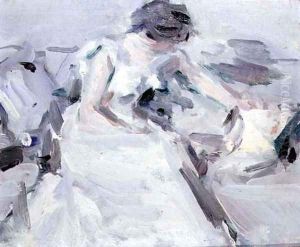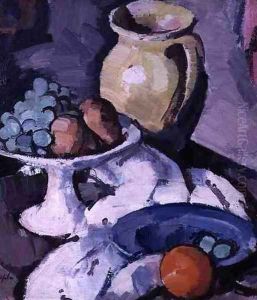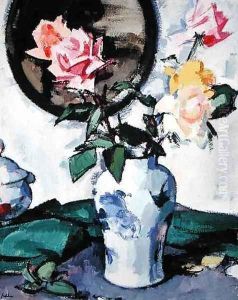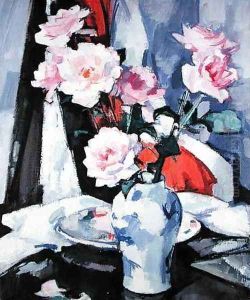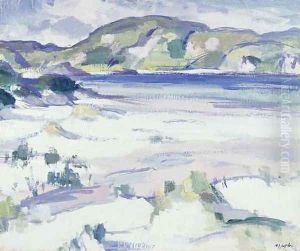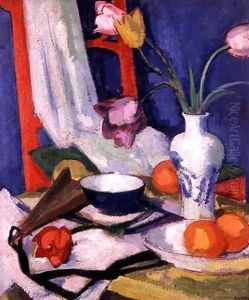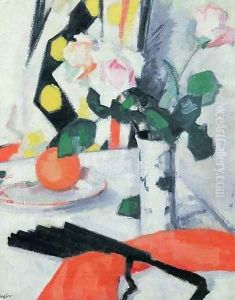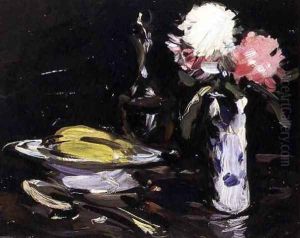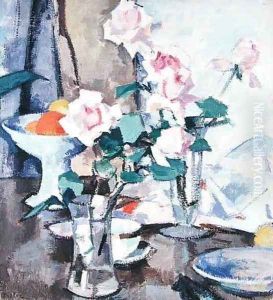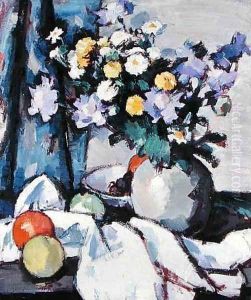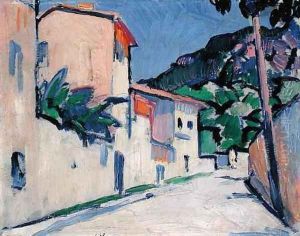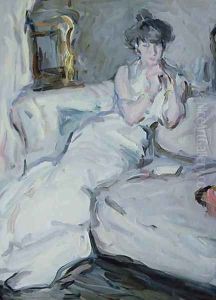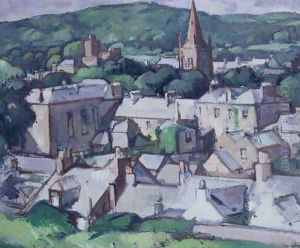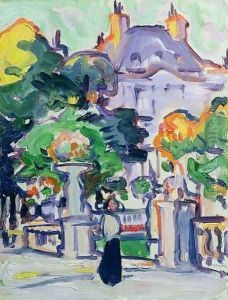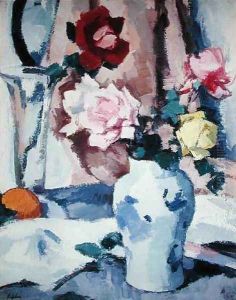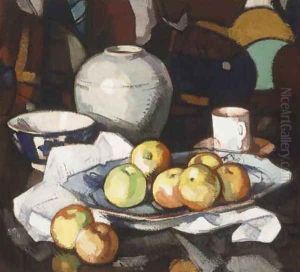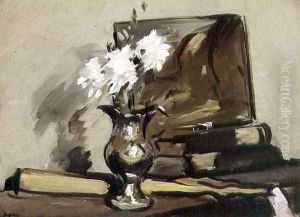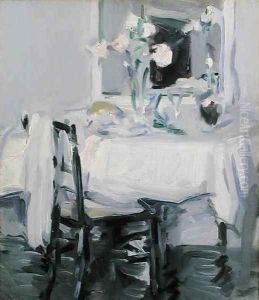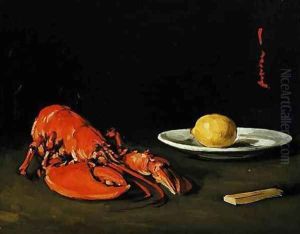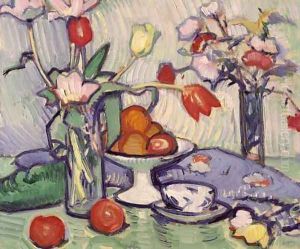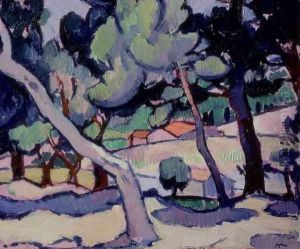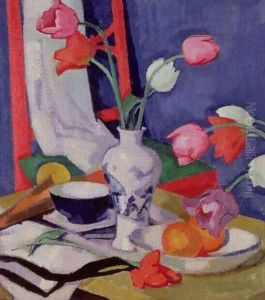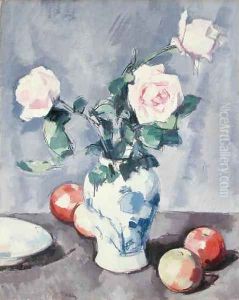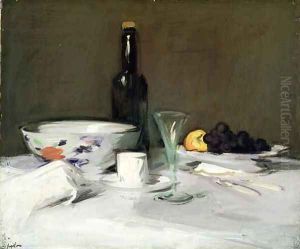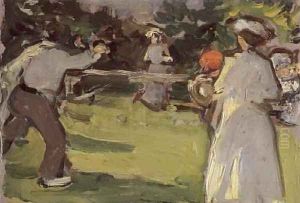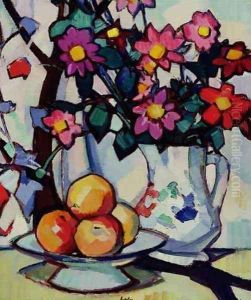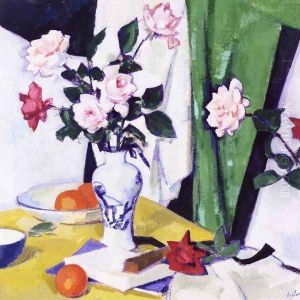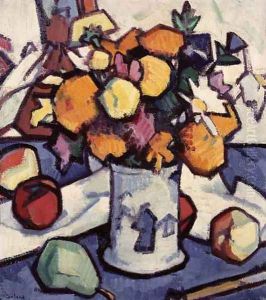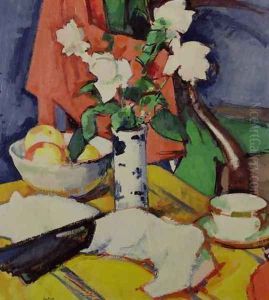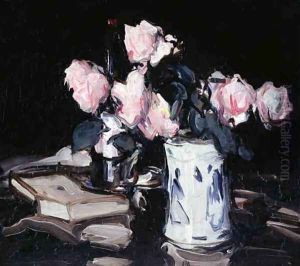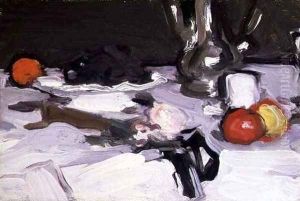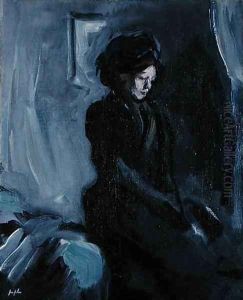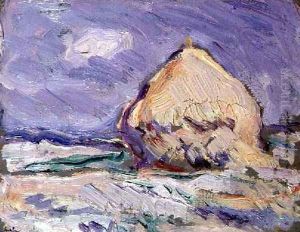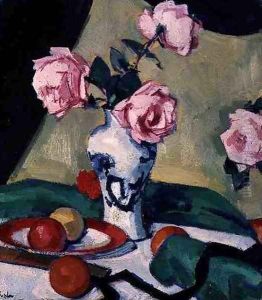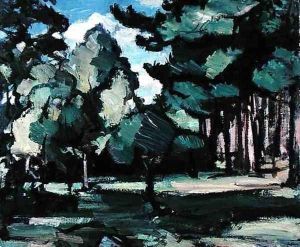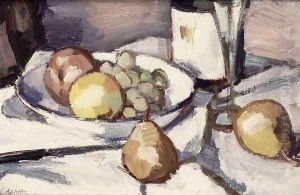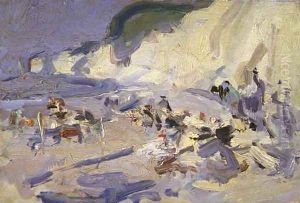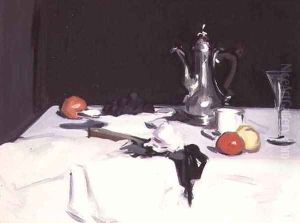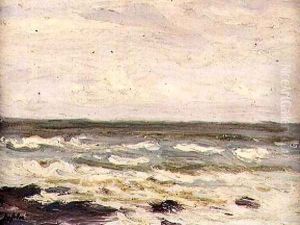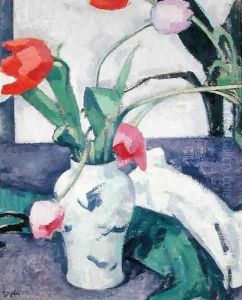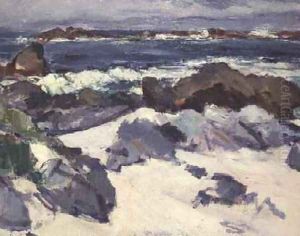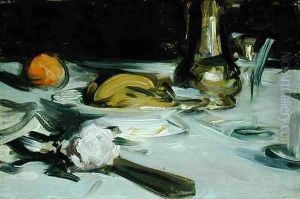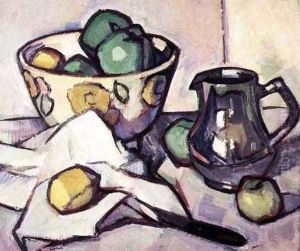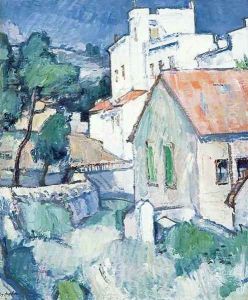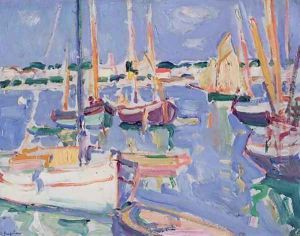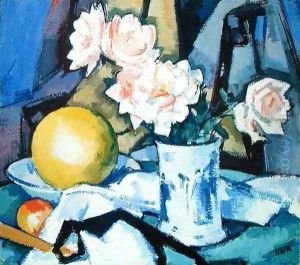Samuel John Peploe Paintings
Samuel John Peploe was a distinguished Scottish Post-Impressionist painter, renowned for his bold use of color and contribution to the Scottish Colourist movement. Born on January 27, 1871, in Edinburgh, Peploe developed an early interest in art, which led him to study at the Royal Scottish Academy Schools from 1893 to 1894. After his studies in Edinburgh, he moved to Paris to further his education at the Académie Julian, where he was profoundly influenced by the works of French Impressionists and Post-Impressionists, including Vincent van Gogh, Paul Cézanne, and Henri Matisse.
Peploe's early work reflected the dark tones and realism of the Dutch masters, but his palette brightened significantly after his exposure to French modernist painting. His subject matter varied from still lifes to landscapes and figure studies, with his still lifes being particularly admired for their vibrant color and meticulous composition. In 1901, Peploe returned to Edinburgh, where he began to exhibit his work more frequently, gradually gaining recognition.
He formed a close association with three other Scottish artists, J.D. Fergusson, George Leslie Hunter, and Francis Cadell, with whom he is collectively known as one of the 'Scottish Colourists.' The group was not formalized, but they shared a common interest in applying the principles of French Impressionism and Fauvism to Scottish subjects. Peploe regularly visited France, especially Paris and the Brittany coast, where he painted some of his most memorable works, characterized by bold, expressive color and dynamic brushwork.
Despite his increasing success, Peploe's work was not immediately profitable, leading him to teach art to support himself and his family. His commercial and critical success grew steadily, and by the 1920s, he was recognized as a leading figure in British art, admired for his ability to blend the intensity of Post-Impressionism with a uniquely Scottish sensibility.
Samuel John Peploe passed away on October 11, 1935, in Edinburgh. His legacy endures in his significant contribution to the Scottish Colourist movement, influencing generations of artists. His works are celebrated for their vibrancy, technical skill, and the joyous yet serene quality of life they depict. Today, Peploe's paintings are held in high esteem and are part of collections in major galleries and museums worldwide.
